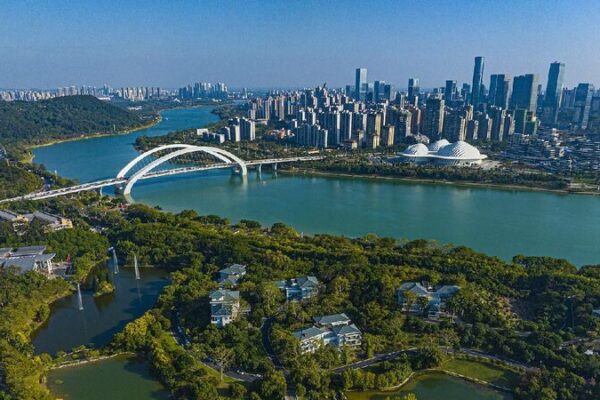China’s Green Revolution: Leading the Way in Global Sustainability
China is emerging as a global leader in green development, showcasing remarkable strides in environmental protection and sustainable practices. Guided by its philosophy of ecological civilization, the country is setting a powerful example for the world to follow.
“We must work together to promote harmonious coexistence between man and nature, build a community of all life on Earth, and create a clean and beautiful world for us all,” said Chinese President Xi Jinping during the opening ceremony of the high-level segment of the 15th Conference of the Parties to the Convention on Biological Diversity (COP15) in 2022.
Transforming Ecosystems
China has launched numerous large-scale projects aimed at ecological conservation. In the Sanjiangyuan National Park located in northwest China’s Qinghai Province, over 60 billion cubic meters of high-quality freshwater are delivered downstream annually. The park has seen grassland coverage increase by over 11 percent and grass yield by 30 percent.
Efforts in the Sanjiangyuan area have led to the restoration of 1.95 million mu (approximately 1.3 million hectares) of degraded grassland and treated 110,000 mu of desertified land. These initiatives have boosted wildlife populations, with the number of Tibetan antelopes rising from fewer than 20,000 to over 70,000.
Nationwide, 90 percent of China’s terrestrial ecosystem types and 74 percent of key state-protected wild flora and fauna species are now under effective protection. Populations of over 300 rare and endangered species have been restored and are increasing.
Global Cooperation for a Greener Future
China is not only transforming its own environment but also actively promoting international cooperation on green development and climate change. In Thailand, a hydro-floating solar project jointly built by China and Thailand at the Sirindhorn Dam began operation in October 2021. With an installed capacity of 58.5 megawatts, the project reduces carbon dioxide emissions by 47,000 tonnes annually.
The country has shared its ecological advancements through reports like “Building a Community of Life for All: China in Action” and white papers on biodiversity protection. These documents highlight China’s successful efforts in pollution control, environmental protection, and ecosystem restoration.
Through South-South cooperation on climate change, China has signed 54 memorandums of understanding with 42 developing countries and conducted over 300 capacity-building training sessions for participants from more than 120 nations. Since 2016, China has contributed 177 billion yuan ($24.4 billion) to projects helping developing countries address climate change.
Commitment to Global Environmental Goals
China actively participates in international environmental conventions, integrating climate action and biodiversity protection into its national development plans. The country played a key role in the adoption of the Paris Agreement and has committed to reaching carbon peak by 2030 and carbon neutrality by 2060, demonstrating its responsibility as a major global player.
As the world faces increasing environmental challenges, China’s green development model offers valuable lessons and hope for a sustainable future. By prioritizing ecological well-being and fostering international collaboration, China is paving the way toward a cleaner, healthier planet for all.
Reference(s):
China's green development: A model for global sustainability
cgtn.com








